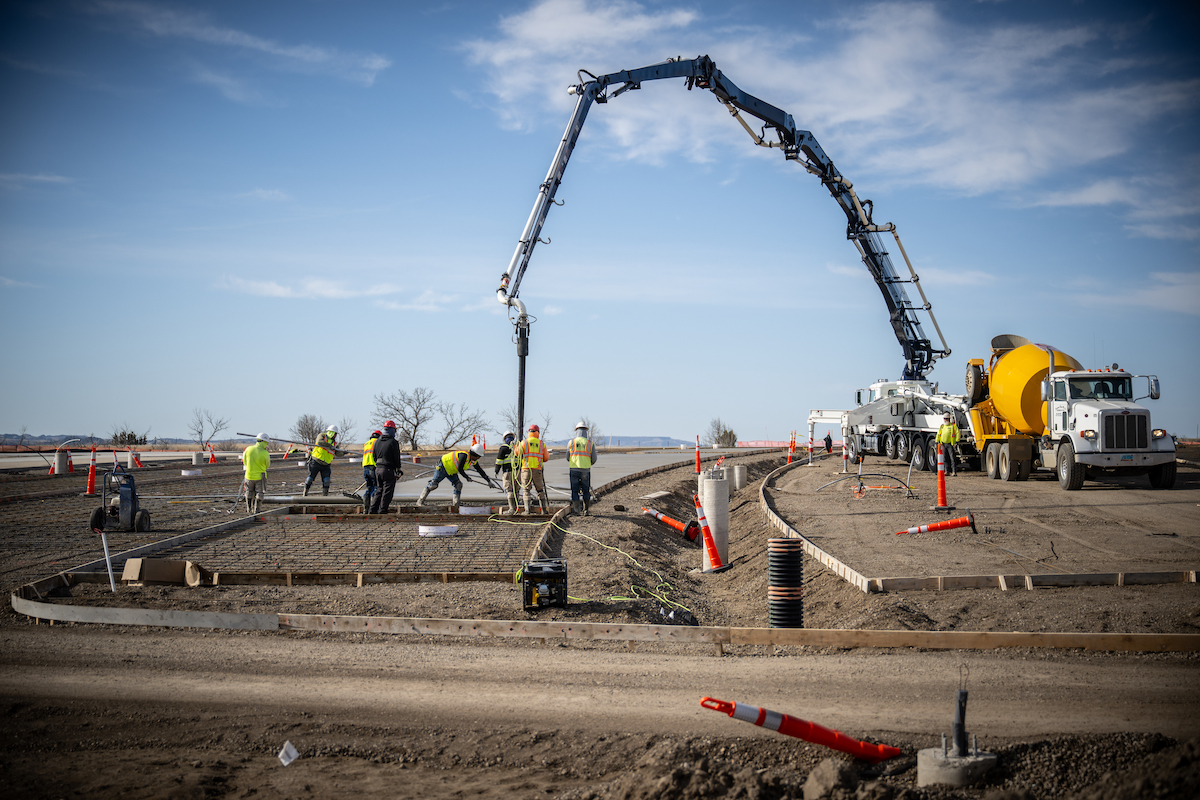While there are many nozzle options available in a variety of configurations, the standard Tier 2 nozzles that typically are supplied with the purchase of a sewer truck are only rated 50 to 60 percent efficient. Although these nozzles can handle some blockages, some contractor sewer crews are opting for the highest performance nozzles to make short work of even the most challenging jobs.
Utilizing such high-performance nozzles has benefits that go far beyond conserving water to protect the environment. Reducing water use also minimizes trips to refill the sewer truck water tank and keeps contractors effectively cleaning to expedite work completion. By decreasing unnecessary travel, the approach also reduces the cost of vehicle fuel and maintenance, which further boosts profitability.
In contrast, the most effective Tier 3 nozzles have tight water patterns that efficiently clean the pipe wall and create a powerful water stream to move debris long distances and propel the nozzle. Crucially, these nozzles provide efficient fluid mechanics to prevent the wasteful use of water (GPM) and operating pressure (PSI).
However, even within the Tier 3 category there are significant differences in levels of efficiency. Opting for the lower end Tier 3 nozzle with 75 percent efficiency could still lead to additional trips to refill. Additionally, such units may not remove restrictive sewer buildup or blockage in a timely manner.
“Today, contractors want to conserve water use to be more productive with their trucks and work crews. Water is an important natural resource, and usually drinking water is used,” says Matthew Woods, Vice President of Sales and Marketing at Haaker Equipment, a dealer of sewer cleaners, pipe inspection equipment, and parking lot sweepers for the contractor, municipal, and industrial sectors in California, Nevada, and Arizona.

| Your local Trimble Construction Division dealer |
|---|
| SITECH Northwest |
In the case of Haaker Equipment, Woods says that Tier 3 nozzles from KEG Technologies are frequently recommended, although the dealer also carries nozzles of various tiers from other manufacturers as well.
KEG Technologies, a manufacturer of sewer and storm lines products including Tier 1 to Tier 3 nozzles, chain cutters, floor cleaners and camera nozzle systems, is a member of NASSCO, the National Association of Sewer Service Companies. The Spartanburg, South Carolina-based company’s Tier 3 nozzles, such as the Aqua Power 700 and OMG, provide up to 98 percent efficiency.
According to Woods, refilling the sewer truck tank with water can take 30 minutes to an hour, depending on the hydrant location.
“Typically, the highest operating cost over the life of the vehicle isn’t the truck or the nozzle: it’s the operator's labor, and that is saved tremendously by using an ultra-efficient Tier 3 nozzle. If an operator can avoid two water tank fill cycles a day by using the most efficient nozzles, they can save an hour a day, 20 hours a month, and 140 hours annually, which is a great boost to productivity,” says Woods.
The difference between using a Tier 2 nozzle and a top Tier 3 nozzle can be cleaning from 30 percent to virtually 50 percent more sewer line with the same amount of water. Also, efficient water use also reduces vehicle fuel as well as wear and tear by requiring fewer trips to the hydrant.

| Your local Gomaco dealer |
|---|
| Hayden-Murphy Equipment Co |
In addition, while municipal water is usually free locally, the ability to conserve water can minimize potential water use charges for contractors who use water from a county line.
In the case of KEG’s Tier 3 nozzles, the high-performance fluid mechanics design leaves little room for power losses and excessive turbulence. After exiting the jetter hose, water travels into the body of the nozzle before moving through smooth, curved channels. This design enables the water to maintain its power and speed before entering the nozzle’s replaceable titanium ceramic inserts. Next, the water is funneled from a short conical shape to a larger, longer cylindrical shape, allowing a tight water pattern to emerge.
The internal workings of the nozzle, including the way the water gets turned, redirects the energy of the high-pressure water entering the nozzle as efficiently as possible. This results in what is needed for the task: more thrust and power using less water.
“There is tremendous force and pressure created in a Tier 3 KEG nozzle. It is often what is needed to get the most out of the Vactor sewer trucks we represent, which are considered the ‘Ferrari’ of the industry. To extend the analogy, you cannot go 200 mph in a Ferrari with the cheapest tires available,” says Woods.
Troy Whitton is a Parts and Service Sales Specialist at Vimar Equipment, a British Columbia, Canada-based dealer of sewer and street vehicles and equipment for the contractor and municipal markets. Whitton, who has been a dealer for 20 years and is the startup demonstration trainer for the equipment that Vimar sells, also recommends utilizing highly efficient Tier 3 nozzles.

| Your local Komatsu America Corp dealer |
|---|
| Road Machinery and Supplies Company |
“With the KEG design, operators get the greatest efficiency out of their water, which provides the most power to clean the pipe and pull the hose. Because it is so efficient, operators typically achieve more than they ever could before with a lot less water,” says Whitton.
According to Whitton, as a dealer it is important to educate contractors and municipal mangers to help them understand how they can achieve the greatest value with their equipment.
As a Vactor sewer truck dealer, he wants Vimar Equipment’s customers to understand the importance of using the highest quality nozzle on the hose to get the cleaning job done safely, quickly, and efficiently.
Additionally, he suggests that choosing the best tool for the job can resolve the most difficult cleaning challenges, when a less powerful or precise nozzle may not be sufficient to do the job in a timely way.
“Selling the best nozzle for the job goes hand-in-hand with selling Vactors because the nozzles do the work. The nozzles are essentially the ‘tip of the spear’ so you need the right nozzle for the job,” says Whitton.

| Your local Volvo Construction Equipment dealer |
|---|
| Nuss Truck & Equipment |
While he acknowledges that lesser nozzles may cost less at first, he says that such units ultimately end up costing considerably more in less efficient work performance on the job.
“Compared to a Tier 2 nozzle, a high efficiency Tier 3 nozzle will cost a little more initially, but can pay off rather quickly because you can get the job done in much less time,” concludes Whitton.
While contractors, dealers, and municipal supervisors have long accepted the status quo in sewer, storm and sanitary line cleaning, better approaches now exist in the form of ultra-efficient Tier 3 water conserving nozzles that can enable work crews to perform significantly more in less time. Ultimately, this helps to cost effectively boost both service ratings and profitability.



































































